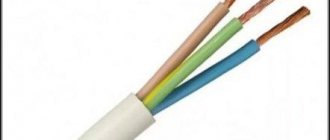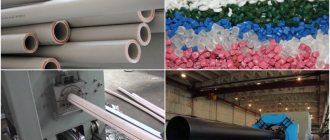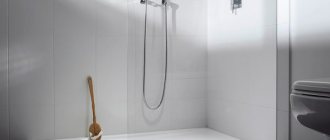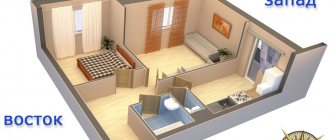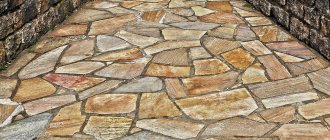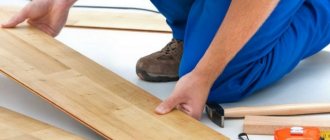- Metal tiles
It is difficult to overestimate the importance of keeping your roof in optimal condition during the winter. Eliminating leaks and restoring pavement damaged by ice can result in unexpected costs of time and money.
Why keep the snow on the roof?
Winter precipitation leads to the formation of a uniform layer of snow on the roof. Under the influence of daily temperature changes on the roof, periodic melting and freezing of the snow cover occurs, resulting in the formation of a monolithic ice crust. If this block falls down from the roof at once, breaking through all the obstacles along the way, there can be serious consequences for both people and the roof.
To prevent this, snow is kept on the roof using special devices. Then it has time to melt, and melt water or small pieces of ice come off the roof, into which the monolith is crushed during the melting process.
Operating principle of roofing snow blocking systems
The installation of snow guards on a metal tile roof is especially relevant - a smooth polymer surface cannot seriously prevent the snow mass from sliding off. If the bottom layer of snow has turned into an ice crust (which happens in 70-80% of cases), when it melts it will inevitably damage the surface of the sheet. Scratches will become sources of corrosion and the roof will not last as long as it should.
Three factors influence the choice of snow retention system:
- Slope angle.
- The amount of snow cover characteristic of a given region.
- Type of roofing.
The snow guards on sale can be divided according to the operating principle into two groups:
- Snow cutters . This design is designed to let snow through in small portions, piece by piece. The principle of its operation is not to stop (and accumulate) a layer of snow, but to divide it into fragments. Advantage of the design: a large mass of snow does not accumulate on the slopes, loading the rafter frame. It fades gradually and is not capable of causing damage. Another plus is that snow cutters can be mounted on roofs of any steepness.
One of the options for placing snow guards Source remoo.ru
- Snow barriers . They completely block snow melting; To prevent the accumulated snow cushion from deforming the roof and rafter system, the snowdrifts will have to be removed manually on a regular basis. The installation of snow retention barriers is justified only for a durable structure with a solid load-bearing capacity.
Types of snow guards
Currently, many devices have been developed for retaining snow, which vary in design. Some products hold all the snow accumulated on the roof until it completely melts. Such devices are called snow impellers or snow catchers.
The other part passes through small parts into which the snow cover is crushed when melting; they are called snow cutters.
Structurally, the following types of protective systems are distinguished:
- tubular;
- lamellar;
- lattice;
- point, they are also yokes;
- toothed;
- corner;
- polycarbonate;
- network;
- logs on hooks.
Each of them has its own area of application, limited by the material and design of the roof, and climatic conditions.
Tubular snow guards for metal tiles
Metal tiles, due to their properties, are affordable, popular and therefore more widespread than other roofing materials. But its surface is smooth, sensitive to temperature changes, and is not capable of holding melted snow for any long time. This property makes the installation of snow retainers on a metal tile roof an urgent necessity. The following types of snow guards are suitable for metal roofing (as well as corrugated sheeting):
- Lattice . Reliable, easy to install, varied in design.
- Lamellar . Suitable for slopes with a small angle of inclination, they are more often used where winters are short and with little snow.
- Tubular . Leading in frequency of use.
Universal tubular snow retainer Source celinrmo.ru
Tubular structures are considered to be the most universal category. They are designed for high pressure, are reliable in operation, and safely separate the snow layer into small fragments. They are also widely used in the protection of tiled and soft roofs. Tubular snow guards on metal tiles are mounted following several rules:
- The parts are fastened through the roof .
- Installation is carried out after the sheathing has been reinforced , the basis for securing the system parts.
- To prevent the sheet of metal tile from deforming, a hole is drilled in the concave (lower) part of the wave , at the point of contact with the sheathing.
- The fastening points are sealed with rubber gaskets .
If you choose plate or corner snow retainers, you do not need to reinforce the sheathing, since they are mounted directly into the sheet. Choosing models of snow guards that work on the principle of snow cutters allows you not to worry about timely cleaning of the roof - even in a strong snowstorm, the snow will melt off in safe portions.
Tubular
The design of these consists of two brackets made of durable strips of stainless steel or galvanized metal, fixed to the roof surface. Several pipes with a diameter of 15 to 30 mm (usually two or three) are passed across them through special holes, which create an obstacle to snow melting.
The brackets themselves are made in the form of an angle, the horizontal base of which is attached to the roof, and holes are made in the vertical part for installing pipes. There are other configurations designed for use with different roofing materials.
The diameter of the pipes and the distance between them depend on climatic conditions and the angle of the slope. The maximum angle at which a snow retainer of this design performs its functions is 60 degrees. This is a large value, but due to its strength, the tubular design provides effective snow retention on roofs with steep slopes.
The optimal configuration is considered to be one where the height from the decking to the first pipe does not exceed 3 cm. The distance between the pipes is maintained in the range of 8 – 10 cm, regardless of the type of roofing.
Tubular snow retainers, according to their operating principle, are classified as cutting devices. When melting, the snow layer is divided into longitudinal layers of small thickness, which are thrown down.
Typically, tubular snow cutters are installed in one row around the perimeter of the roof, without breaks. They cannot be installed on eaves; under the influence of the mass of snow, the latter can be deformed. In regions with heavy snowfall, two rows of snow cutters are installed. By and large, there may be three or four of them, but in the most severe conditions two rows are enough.
Where on the roof does a snow guard need to be installed?
Freshly fallen snow is very loose and soft. But after just a few days it becomes denser, and as soon as the temperature passes zero, crust appears and the snow mass begins to freeze, eventually turning into a piece of ice.
We see this process under our feet every year, and the same happens on the roof. Even if the roof is well insulated, heat is still lost through it, which accelerates the melting of snow and its transformation into ice. The exception is well-ventilated cold roofs, when the air temperature in the under-roof space is almost the same as outside.
Sooner or later, the frozen snow falls off the roof. This usually occurs when a critical mass is reached or during thaws when the snow melts, forming a thin layer of water between the roofing and the snow cover.
Snow falling from a roof is a layer of snow or a block of ice, often weighing hundreds of kilograms. Add to this the speed that the snow mass gains as it slides off the roof. It’s easy to imagine the consequences if a car, tree, person, air conditioner or satellite dish gets in his way.
Installing snow guards on the roof prevents this. They either hold the snow on the roof or cut the frozen snow mass into pieces. Thanks to this, she gradually leaves the slopes without posing a threat.
Since it is not always possible to install snow guards along the entire length of the eaves, here is a list of the most dangerous areas where their installation is required:
- above the entrance to the garage;
- above all entrances to the house;
- over wires (electrical, television, Internet cable);
- at all levels of multi-level roofs;
- on slopes that are located above paths, sidewalks, roads and other places where people can walk, cars pass or park;
- over enclosures for pets;
- over a canopy, gazebo, veranda, fence.
In addition, to preserve the roofing infrastructure and extend the service life of the roof itself, it is advisable to install snow guards:
- Above ventilation pipes, deflectors, chimneys to avoid damage. In these areas, snow bags form, which are inevitably blown by the wind near any obstacles on the roof. Installing a snow retainer reduces the size of the snow bag and reduces the likelihood of leakage.
- Above the attic windows so that they are not covered with snow. This allows you to maintain the transparency of the glass longer - in the lower layer of compacted snow there is a lot of dust, ice crystals and other abrasive particles. Therefore, a sliding layer of snow can scratch the glass of a skylight if there is no obstacle in its path.
- Above satellite dishes, antennas and other equipment installed on the roof.
- In areas where snow melting can damage trees, bushes, and supports for climbing plants.
- In several rows on a long slope or in regions with a heavy snow load. If the mass of snow is very large, then when it melts, the layer can accelerate so much that it literally blows away the snow retainer. Installing snow guards on the roof in several rows prevents this. Usually they are placed at a distance of 1.5-2 m from each other.
Installation of snow guards is not necessary on those slopes where snow falling off does not pose a danger. Also, snow guards are not needed on very steep roofs - snow simply does not stay on them.
Plate or corner
Plate snow guards are often called corner snow guards, due to their design. The retaining element consists of a steel plate bent at an angle. Such devices are used on coverings made of corrugated sheets and metal tiles.
The plates are mounted along the eaves at an upward angle, in two rows, with a step of 2 - 3 waves of roofing material. In climatic conditions with frequent snowfalls, corners are installed in 3–4 rows, especially with large slope angles. The distance between the rows must be maintained within no more than 1–1.5 m, otherwise snow retention will not be effective enough.
Basic principles of installation
To make it easier to figure out how many, where and how to install snow guards, we suggest you familiarize yourself with the table.
Table 1.1. Method of installing snow guards on different types of roofs
| Snow guard type/roof type | Spot | Linear | ||||
| Hook (yoke) | Brace (Polish) | Screen | Corner | Tubular | Lattice | |
| Soft | Punch-out installation, with two or more self-tapping screws | Not placed | By punching method, using self-tapping screws with a pitch of no more than 800 mm | By punching method on brackets, at least 4 attachment points per bracket | ||
| Metal tiles and corrugated sheets | Self-tapping, fastening on the crest of a wave | Self-tapping, fastening to the crests of two adjacent waves | On self-tapping screws, on the crest of a wave | Fastening with self-tapping screws to wave crests | Punch-out installation on self-tapping screws, in wave troughs | |
| Seam metal | In the spaces between the folds, with punching of the coating | Usually not placed | On clamping brackets, directly on the folds | |||
| Made from natural tiles and similar materials | Hanging the yoke to the sheathing before installing the tiles or on the hooks to the panels | The bracket is attached either to the sheathing before installing the tiles, or hung with a hook on the panel below | ||||
| Transparent on frame | Not mounted | Mounted to the frame using self-tapping screws | Attached to the frame with self-tapping screws | Fastening to the frame with self-tapping screws | ||
| Soft on a frame without sheathing | Snow guards are mounted in exceptional cases on the frame | |||||
Lattice, network
Lattice systems retain the entire mass of snow, only melt water leaves the roof. They consist of brackets connected to a vertical all-metal grille. The material of the entire structure is durable galvanized steel, coated with paint. You can choose a product to match any roof color. The height of the grate varies between 5-20 cm.
Large grilles are equipped with strong fastenings that can hold a large mass of snow.
A variety of grid snow catchers are network ones, which use a metal mesh welded onto a durable frame. These are used in multi-storey buildings to retain wet snow, as well as on coverings made of natural ceramic tiles.
Lattice snow guards are suitable for use with all roofing materials. There are options where the grille is reinforced with transverse pipes, giving additional rigidity.
Lattice structures are mounted parallel to the cornice, at a short distance from it. For slopes longer than 5.5 m, in addition to the protective grille, auxiliary retaining elements are installed.
Point or yokes
Point snow retainers (yokes, hooks) are used on roofs with soft coverings, or they complement other devices. The pitons themselves are not capable of holding a large mass of snow.
Yokes are most often used on roofs with a soft covering and a small slope angle. It has a rough surface, which itself prevents snow from rolling off. If such a covering is supplemented with yokes, this may be enough to hold a small amount of snow.
Point snow guards are made in the form of triangles with long edges. During installation, the fastening plate is located under the roofing material. A soft roof laid on top masks the fastening points and prevents leaks.
The yokes are installed every 0.5 - 0.7 m, in a checkerboard pattern.
Types of design, advantages
The most popular option for such structures is the tubular type .
This unit is a simple design of brackets into which two tubes of the same diameter, approximately 15-30 mm, are inserted.
In fact, this type can be considered universal and can be used on any material (metal, tiles, wood, and so on).
And according to professionals, this type of design is considered the most effective . In addition, it can be installed on a roof that has been in use for a long time.
The bracket itself looks like a simple plate with “outlets” for pipes. Often its height is no more than 15 cm . It is attached to the pitched part using a special horizontal stick.
To do this, take special screws that can be attached to metal.
NOTE!
When installing this type of structure, it is necessary to install it along the line of the load-bearing wall . This is necessary so that the load is distributed evenly. The essence of the operation of such a device is the gradual passage of snow (snow will pass between the pipes).
This version of the snow retainer is popular and has received the status of the most promising installation. Also, the tubular structure must be installed exclusively along one line, the option of running is excluded. If the structure is the color of the roof, then it is almost invisible on the roof.
The process of installing such a system is quite simple:
- mark the holes and drill them with a drill;
- assemble the kit itself, but do not tighten the bolts;
- the existing assembled bracket must be secured through the roof to the sheathing;
- Attach the lower part of the structure to the cornice ( at the level of the load-bearing wall );
- Now just connect the components by tightening the bolts.
Tubular type
Another good option for saving from improper snow melting is snow stops (hooks) . From the name it is clear that in appearance such structures resemble hooks.
But they cannot hold a lot of snow , so it is best to use them in cases where the roof will be cleaned on a regular basis. Often such hooks are mounted on soft bitumen shingles.
Experts advise using this option as an auxiliary option to other, more reliable systems, in places where a lot of snow falls.
Snow retainer - hook
Lattice type snow retainer . This type of construction is suitable in places where there is a large amount of snow, since a special grill can withstand strong pressure . The snow is retained on the roof, and only melt water flows down.
Install them at a large angle. The efficiency of such an installation is affected by its height (grille height) . The color of the grille can be matched to the color of the roof.
The maximum height reaches 20 cm .
Lattice type
The corner version of the snow retainer is relevant where there is not much snow . Most often they are mounted on corrugated sheets or metal tiles, because the structure itself is made from these materials.
It is obvious from the name that externally, this type of installation resembles a corner on which there are special fasteners for installation . It is not recommended to install on slopes above 30 degrees.
They are attached directly to the roof itself; you can arrange them randomly or in one line.
Corner view
Some people prefer to use a wooden log as a way to hold the snow . The option is not very common. You can find it on different types of roofs, for example, on a shingle roof. It is attached to the roof on large hooks.
It is logical that the size of the log affects its capabilities, that is, the larger it is, the more snow it can hold . To have the effect of such a design, it is worth attaching it at a distance of 2-3 cm from the roof.
This causes a small amount of snow to melt and flow down the drain, while most of the sediment remains on the roof and melts naturally.
Serrated
Toothed snow retainers belong rather to the class of snow cutters. They are not able to hold the entire mass of snow. The compressed snow crust is held until it crumbles into small pieces that do not pose a threat to the building and people. They look like a curved bar with a tooth or hook on top.
Toothed snow retainers are used on roofs with soft coverings, which themselves have retaining properties. On metal tiles they complement lattice fencing.
Polycarbonate
Polycarbonate snow guards appeared relatively recently. These are transparent products, shaped like point and corner snow catchers. Installation of polycarbonate is carried out using a combination of self-tapping screws and glue, which ensures high strength of the connection. There are no standards for the number of required polycarbonate elements. The more of them required, the more snow and the angle of the roof slope, its size.
In production, high-quality polycarbonate is used, which is not afraid of frost and exposure to ultraviolet radiation. The temperature range is from –70 to 100 ºC. The scope of application is identical to that of corner products.
Logs on hooks
This is the oldest way to keep snow off the roof. A specially impregnated log is used as a snow retainer, which is held by hooks attached to the roof.
This solution is most often used on roofs made of natural tiles. The log does not harmonize aesthetically well with modern coating materials. Another drawback is that moisture accumulates between the roofing and wooden surfaces unless special measures are taken. When frozen, the ice can tear out the hook.
Advantages of different designs
Snow cutters have a number of undeniable common advantages. Among them:
- protecting people from injury when snow melts;
- ensuring the safety of the roof;
- protection of the coating from damage when snow crust slides
- high strength and corrosion resistance.
- a wide range of colors and designs, allowing you to harmoniously select the necessary device for any type of roof.
- simple installation that does not require special skills.
There is only one general drawback of protective systems: increased load on the roof frame or its covering.
There are specific advantages due to the design of snow protection. Tubular, lattice products with a one-piece structure are capable of holding large masses of snow, but place increased demands on the strength of the base. If the strength characteristics of the base and structural elements do not match, the roof covering may be damaged, while the protective elements will remain intact.
Point structures, consisting of discrete parts, allow you to cover a large surface of the roof and evenly distribute the load. The disadvantage of this system is its inability to hold large masses of snow.
The best option is a combination of such systems. In this case, integral and discrete systems balance each other's shortcomings.
Requirements for snow guards
- They should not interfere with the drainage of rainwater from the roof, become clogged with fallen leaves and other debris, or cause the formation of icicles.
- It is necessary that the products are firmly fixed to the roof and can withstand the pressure of the snow mass.
- The installation of snow retainers should not affect the tightness and durability of the roof.
- It is desirable that the service life of the barriers is no less than that of the roofing. The best option is hot-dip galvanized steel with sintered powder or other wear-resistant polymer coating.
- The devices should not spoil the appearance of the roof and facades. They need to be either inconspicuous or match the style and color with the roof or other elements of the building.
The more complex the roof shape, the more carefully you need to think about the location of the snow retainers.
Vladimir Grigoriev
With a multi-level roof, snow retainers prevent damage to the coating of the lower tiers.
How to choose a snow guard
The choice is, first of all, determined by the snow load that the supports of the protective system can withstand. It, in turn, depends on the following factors:
- roof size;
- slope angle;
- type of roofing material;
- frequency and abundance of snowfalls.
It is clear that a small flat roof, on which snow falls several times a year, does not need particularly strong protection.
Statistics say that snow catcher supports can withstand loads ranging from 70 to 500 kg. But this is similar to the average temperature in a hospital. The lion's share of products on the market can withstand a load of no more than 150 kg. The calculated value of this parameter must be indicated by the manufacturer in the product passport.
It is believed that supports supporting 75 kg should be installed in 3 rows. A support capable of holding 300 kg can handle large amounts of snow on its own.
The strength of the coating itself must also be taken into account. If it is not able to withstand the load that the support can handle, under the influence of excess snow mass for a given covering, the fastening will be torn out and the roofing material will be damaged. It is equally important to evenly distribute the load over the surface. If the entire weight of the snow is concentrated on a small area of the eaves, it may not be able to withstand it and the roofing system will be damaged.
It is advisable to combine snow catchers. This is insurance in case a large amount of precipitation falls in a short time, which is not typical for the area. Under normal conditions, for example, a lattice fence is sufficient. If you add toothed snow catchers, they will help cope with unexpected heavy snowfall.
Roofing snow retention systems: popular design solutions
As a rule, snow blocking systems are purchased at the stage of housing construction, simultaneously with the roofing material (but nothing prevents you from purchasing them later). You can choose products from one of the following types:
- Lattice . Such designs are widespread and are successfully used for various types of roofing, including metal tiles. There are several types of products on the market, differing in complexity of execution and features of supporting parts. Relatively high grilles can perform an additional function: serve as a safety barrier in the summer, during repairs.
The capabilities of the lattice system are clearly shown Source tr.decorexpro.com
See also: Catalog of companies that specialize in roof repair and design.
- Angle (plate) A budget option that can be chosen if snow accumulations are insignificant. Angle-type snow guards are easy to design and install, which makes them popular, including for metal tiles. Looks like a galvanized steel corner; A wide range of shades of protective polymer coating allows you to select products that best match the color of the roof. They are allowed to be used on roofs whose slope angle does not reach 30°.
Corner snow guard Source yandex.uz
- Tubular . If snowy winters are common, tubular construction is an ideal choice, especially for standing seam or metal roofing. In case of frequent and prolonged snowfalls, it is recommended to install tubular structures in several rows.
Tubular design Source zemeljka.ru
- Point (yoke). A relatively new type of device for regions with light and medium snowfalls. They evenly distribute snow pressure across the roof and additionally serve as support for the feet. Various roofing materials require the use of products of a certain shape; snow retainers suitable for soft roofs cannot be installed on metal tiles.
- Made of polycarbonate ( serrated ). They are a type of point snow retainers; The products are transparent, non-corrosive and easy to install.
Budget option Source stroypay.ru
- Horseshoe snow guards . A type of point system; has a characteristic curved shape and is made to fit certain metal tile profiles, which makes installation easier.
- Snow retainers - logs . The original systems that protected alpine dwellings from snow and in some places have survived to this day; in the modern version, the role of logs is performed by metal pipes with a diameter of 130-150 mm. The tubular design effectively holds the snow layer, confidently coping with high pressure.
Calculation of the number of snow guards
Calculating the number of snow retainers depends on many factors and conditions; it is better to entrust this work to specialists. If you decide to independently calculate the required quantity, the standards specified in the building codes will help.
First you need to determine the following roof parameters:
- overhang length;
- tilt angle;
- slope length.
Next, you need to find out which snow region the area belongs to. Information can be found in Appendix 5 to SNiP 2.01.07-85. By comparing the obtained data with the tabular information, you can determine the number of required rows. If the length of the slope is approximately equal to that indicated in the table, installing one row of snow catchers is sufficient. If the value is greater, two rows are needed, sometimes three if the excess is significant.
Having decided on the number of rows, calculate the number of units in one row to protect the entire perimeter of the roof. The installation step is indicated in the same table.
Order turnkey installation of snow guards
The price of snow guards is comparable to the costs of periodic roof cleaning and repairs, which are inevitable in case of uncontrolled snow melting. Installing snow guards on the roof is a popular service provided by many construction organizations, often in parallel with the installation of the roof. Turning to specialists allows you to obtain complete protection of the roof structure and the surrounding space. The price for installing snow guards is calculated per linear meter; it depends on several parameters:
- Roof type and roofing material.
- Heights of the house , difficulty of access to the roof.
- Type of selected snow retention system.
- Scope of work (depends on the size of the roof and, therefore, the number of snow retention elements)
- Necessities of preparatory work .
Contacting the company allows you to get additional benefits:
- The quality of the system is affected by the time of its installation ; the optimal price/quality ratio can be obtained simultaneously with the installation of the roof.
Installation of tubular system brackets Source sense-life.com
- The system is installed in accordance with the manufacturer's recommendations , which increases the service life of the structure.
- Equipping a roof with snow guards requires obtaining a warranty on the work (and sometimes on the material). If a defect is identified during this time, it will be corrected free of charge. If problems do not arise during warranty service, they most likely will not occur in the future.
Installation of snow retention structures
It is preferable to install snow guards during the roofing process. This makes installation easier and reduces the likelihood of errors. The protection can also be mounted on a finished coating. The fastening technology depends on the design of the snow protection elements and the type of roofing. There are rules that are the same for everyone.
Installation starts from the eaves, with a distance of 30 - 50 cm from the edge.
For heavy loads, snow catchers are installed in 2 or even 3 rows with an interval of 5 - 5.5 m.
The step inside the row should be from 60 to 110 cm, depending on the snow load.
Dot products are installed in a checkerboard pattern, evenly covering the surface.
The supports of tubular structures are installed above the load-bearing walls. This dramatically reduces the load on the roof.
Installing snow protection on a certain type of surface has its own specifics.
Metal tiles
Installation, for example, of tubular systems to metal ceramics is carried out in a certain sequence. First of all, the brackets are installed. They should be located so that the pipes are above the load-bearing wall of the house, at a distance of at least 40 cm from the edge of the roof. For this:
- holes for attaching the first bracket are drilled at a distance of at least 30 cm from the edge of the roof;
- the bracket is placed on the surface, and its upper end should rest against the cut of the previous wave of tiles;
- Mark holes for fastening. The hole locations should be above the sheathing slats;
- Gaskets made of water-repellent material of different thicknesses are applied to the upper and lower holes to compensate for height differences;
- the first bracket is fixed, followed by all the others in the same way;
- A horizontal snow retention pipe is threaded through the holes on the vertical walls.
Installation of other types of snow protection on metal tiles is carried out in a similar way, with minor differences.
Let's sum it up
In the article, we told you in what places snow guards are needed on the roof, and how to properly install them on metal tiles and other roofing coverings.
Snow chocks are required above all entrances to the house, the entrance to the garage, on multi-level roofs, on slopes, where snow falling off can damage things or injure people. In addition, it is advisable to place them above roof windows, pipes and elements of roofing infrastructure.
For metal tiles, tubular snow guards are best because they work like snow cutters. But you can also install lattice snow barriers, as well as corner ones - as an addition or as an independent snow retainer on flat roofs.
When installed on metal tiles, snow retainers are attached above the load-bearing wall to the sheathing in the deflection of the wave. The lower edge of the bracket is raised using linings. On a seam roof, snow barriers are installed directly at the joint of the panels, and on tiled roofs - simultaneously with the installation of the roofing.
Installation on a seam roof
Seam coverings are made of metal sheets, which are fastened with a special lock - a seam. Snow does not linger on metal surfaces, so this type of roof especially needs durable snow retainers. Tubular and lattice systems are installed on seam roofing.
The brackets are attached to the locks, observing the following sequence:
- The clamp in the shape of the letter “A” is attached to the fold.
- Bolts are passed through the brackets and clamp, which are tightened with a nut and firmly compress the entire structure.
- Pipes are pulled through the holes in the brackets, the ends of which are closed with plugs.
Lattice structures are installed in a similar way.
Features of installing snow guards on other roofing coverings
The principle of operation of snow retainers on all types of roofing coverings is the same. But the approaches to installing them are different. Let us dwell only on the main features of installing snow retainers on other types of roofing materials.
For seam roofing, only lattice and tubular snow retainers are used. They must have special brackets that fit directly onto the fold and are clamped onto it. This method of installing snow retainers maintains the tightness of the roof and is at the same time reliable: the thickness of the sheet at the seam joint is at least four times greater than on other sections of the roof.
On a soft roof, you can use any type of snow retainer, but, most often, standard triangular yokes are installed on it. The rough top layer of bitumen shingles retains snow well, so tubular and lattice snow barriers are rarely needed on such a roof: only in regions with a very high snow load and with a large slope of the slopes.
Installation of snow retainers on soft roofs is carried out simultaneously with the laying of bitumen shingles. Snow cutters are fastened in the center of the petal with nails so that the shingles cover the entire fastening strip up to its thickening at the point where the triangle is formed. Bitumen mastic is applied over the installed fasteners in a layer of 1 mm or less.
On a roof covered with any type of piece tiles - including ceramic tiles, copper tiles, slate - do not use corner snow retainers. Other types of snow barriers, as in the case of bitumen roofing, are installed during installation of the roofing. In this case, hanging fasteners are used.
A hanging fastener is a strip of metal with an average length of 200 mm, bent at the end. When installing the snow guard, the fasteners are hooked to the sheathing and secured to it with two self-tapping screws. After this, the next row of tiles is installed on top of the fasteners. Suspended fasteners are very reliable, since the fastening points are protected from moisture, and the hook makes it almost impossible for the bracket to come off.

